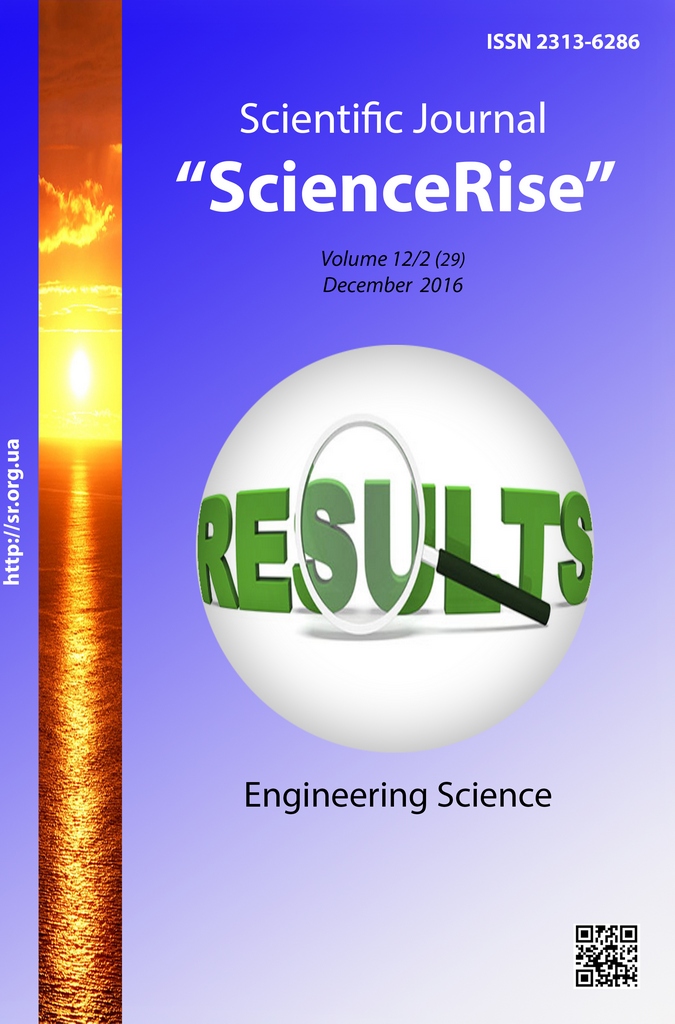Development of geoinformation zoning model of urban territories for use in urban cadaster systems
DOI:
https://doi.org/10.15587/2313-8416.2016.86173Keywords:
zoning, town-planning, regulations, object-relational approach, geoinformation model, geospatial databaseAbstract
The structure and composition of zoning spatial resources is explored. Geoinformation mode of geospatial zoning data on the basis of object-relational database management system is developed. Developed zoning model is tested in the environment of open-source database management system PostgreSQL. Applied SQL-function for automatic creation of build conditions and restrictions of land development is implemented
References
Lyaschenko, A., Kravchenko, I., Gorkovchuk, D. (2015). Kontseptualni zasady heoinformatsiinoho modeliuvannia zon obmezhen ta yikh reiestratsii u zemelnomu i mistobudivnomu kadastrakh [Conceptual bases of geoinformational modelling of restriction zones and their registration in land and town-planning cadastre]. Modern achievements of geodetic science and industry, 2 (30), 61–68.
Gorkovchuk, D. (2013). Analiz intehruvannia heoinformatsiinykh resursiv system prostorovoho planuvannia terytorii v Yevropeisku infrastrukturu heoprostorovykh danykh INSPIRE [Analysis of integration of spatial planning resources into INSPIRE]. Urban and territorial planning, 50, 118–125.
Azmeri, Hadihardaja, I. K., Vadiya, R. (2016). Identification of flash flood hazard zones in mountainous small watershed of Aceh Besar Regency, Aceh Province, Indonesia. The Egyptian Journal of Remote Sensing and Space Science, 19 (1), 143–160. doi: 10.1016/j.ejrs.2015.11.001
Dubrova, S. V., Podlipskiy, I. I., Kurilenko, V. V., Siabato, W. (2015). Functional city zoning. Environmental assessment of eco-geological substance migration flows. Environmental Pollution, 197, 165–172. doi: 10.1016/j.envpol.2014.12.013
Zollner, P. A., Gustafson, E. J., He, H. S., Radeloff, V. C., Mladenoff, D. J. (2005). Modeling the Influence of Dynamic Zoning of Forest Harvesting on Ecological Succession in a Northern Hardwoods Landscape. Environmental Management, 35 (4), 410–425. doi: 10.1007/s00267-003-0217-9
Hagen-Zanker, A., Jin, Y. (2013). Adaptive Zoning for Transport Mode Choice Modeling. Transactions in GIS, 17 (5), 706–723. doi: 10.1111/j.1467-9671.2012.01372.x
Hagen-Zanker, A., Jin, Y. (2012). A New Method of Adaptive Zoning for Spatial Interaction Models. Geographical Analysis, 44 (4), 281–301. doi: 10.1111/j.1538-4632.2012.00855.x
Salvemini, M., Vico, F., Iannucci, C. (Eds.) (2011). Plan4all Project Interoperability for Spatial Planning. Plan4all Consortium, 210.
Clusters of Leading Organizations in SDI for Spatial planning (2009). Plan4all. Available at: https://otik.uk.zcu.cz/bitstream/handle/11025/6231/d2-1-cluster-of-leading-organisations-in-sdi-for-spatial-planning%5B1%5D.pdf?sequence=1
GIS-Kompetenzzentrum der Stadt Uster. Available at: https://gis.uster.ch/
Columbus Zoning Map. Available at: http://gis.columbus.gov/zoning/
Plany zonuvannia. Lvivska miska rada. Available at: http://city-adm.lviv.ua/lmr/plany-zonuvannia
Yeung, A. K. W., Hall, G. B. (Eds.) (2007). Spatial Database Systems. The GeoJournal Library. doi: 10.1007/1-4020-5392-4
Gorkovchuk, D., Kravchenko, I., Synhaivska, O., Ailikova, H., Yanchuk, V. (2013). Struktura ta pryntsypy pobudovy katalohu klasiv obiektiv profilnykh naboriv heoprostorovykh danykh mistobudivnoi dokumentatsii [The structure and principles of the creation of feature catalog of town-planning documentation spatial datasets]. Urban and territorial planning, 47, 27–36.
Downloads
Published
Issue
Section
License
Copyright (c) 2016 Денис Вікторович Горковчук

This work is licensed under a Creative Commons Attribution 4.0 International License.
Our journal abides by the Creative Commons CC BY copyright rights and permissions for open access journals.
Authors, who are published in this journal, agree to the following conditions:
1. The authors reserve the right to authorship of the work and pass the first publication right of this work to the journal under the terms of a Creative Commons CC BY, which allows others to freely distribute the published research with the obligatory reference to the authors of the original work and the first publication of the work in this journal.
2. The authors have the right to conclude separate supplement agreements that relate to non-exclusive work distribution in the form in which it has been published by the journal (for example, to upload the work to the online storage of the journal or publish it as part of a monograph), provided that the reference to the first publication of the work in this journal is included.

